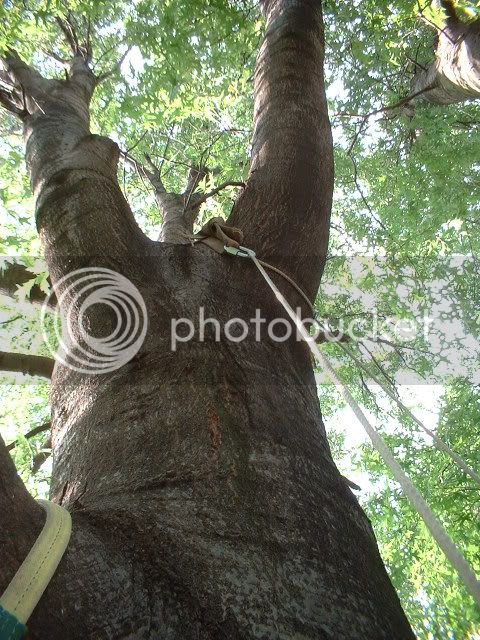Please don't get my post mixed up with questioning the "thread" Adrpk, it's a great thread I am just dubious of someone posting advising you to free climb, climb without the use of cambium saver and to leave ropes or TIP's in trees for extended periods of time...

This advise needs to be clarified...

Great "thread" though!

arboralliance, I'm happy to clarify...
First, when I say "free climb," I don't mean without protection, I simply mean without a rope tied in above you.
Using a cambium saver is not always practical. I use them whenever I can for the sake of both the rope and the tree. Lots of trees here in the Northeast have good thick bark that can stand quite a lot of abuse from a rope. I often will climb to the top of a tree, most of it by free climbing, then install a cambium saver and use it to rappel down...
Leaving a CS in the tree for extended periods. I assume you are concerned about damage from UV light. There will be damage--the question is how much. Here are some of the factors I considered:
1. The manufacturer of the polyester rope I use certifies it for extended periods of outside use if it is inspected regularly.
2. After many months outside, I have never been able to detect the slightest damage, such as powdery surface, broken strands, what-have-you.
3. At my latitude, 45 degrees North, UV light drops to near zero during the winter, and even in the summer is relatively weak (compared to Down Under).
4. I have some small diameter (5 or 6 mm) crappy polypropylene tie-down rope in the back of my open pickup. This is my canary in the coal mine. It is MUCH more susceptible to UV damage than polyester. After 5 years of non-stop exposure, it shows clear signs of damage, but it is still functioning just fine. I wouldn't start worrying about my big fat CS rope until this crappy little tie-down rope is a pile of dust.
5. Mountain climbers have left nylon climbing ropes permanently installed in high places for years, including Everest, and they (reluctantly) still use them.
Conclusion: UV damage to a good polyester rope is extremely slow. Use a small-diameter cheapo polypropylene rope for an exposure meter. When it starts to look really ratty you might want to take a look at that CS that has been up in the tree for a few months...

























































 Ya, you are talking about redirecting the rope, I am talking about redirecting me.
Ya, you are talking about redirecting the rope, I am talking about redirecting me.



